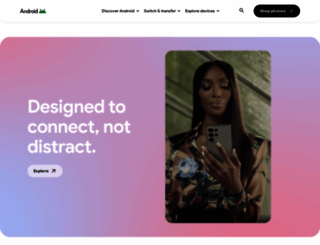Android | Do More With Google on Android Phones & Devices
Page Load Speed
2.7 sec in total
First Response
13 ms
Resources Loaded
755 ms
Page Rendered
1.9 sec

About Website
Click here to check amazing Android content for India. Otherwise, check out these important facts you probably never knew about android.com
Discover more about Android & learn how our devices can help you Do more with Google with hyper connectivity, powerful protection, Google apps, & Quick Share.
Visit android.comKey Findings
We analyzed Android.com page load time and found that the first response time was 13 ms and then it took 2.7 sec to load all DOM resources and completely render a web page. This is a poor result, as 50% of websites can load faster.